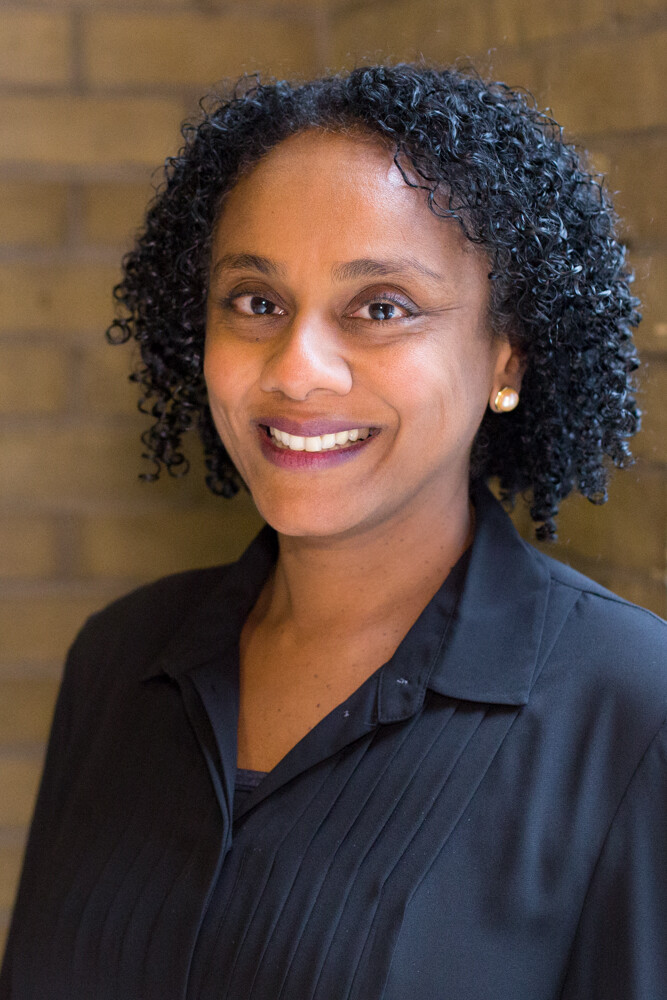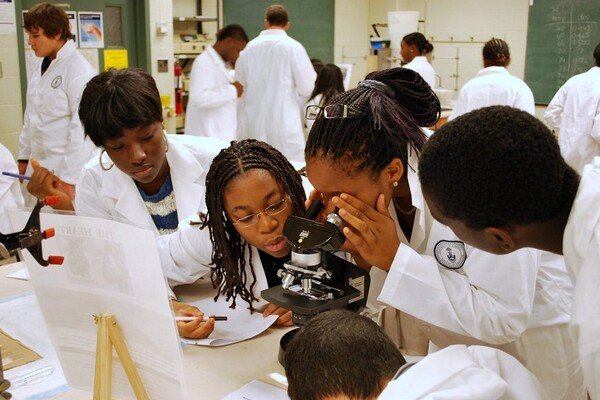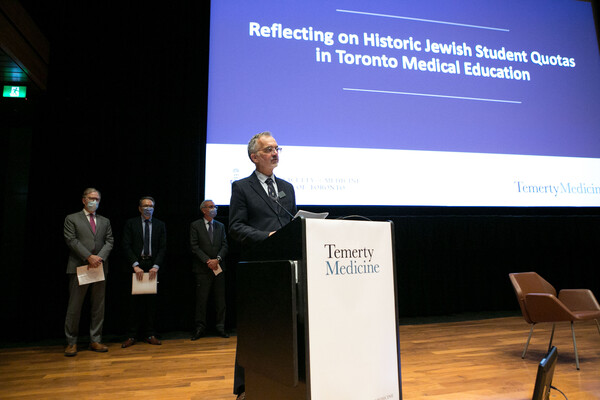Main Second Level Navigation
Breadcrumbs
- Home
- News & Events
- Recent News
- Coming on Strong: Cryo-EM, AI and Equity
Coming on Strong: Cryo-EM, AI and Equity

The wait will soon be over for researchers at the University of Toronto keen to make better use of cryo-electron microscopy, a powerful imaging technology that provides atomic detail on the 3D structure of proteins.
The university’s request for proposals on a new cryo-EM system will close this month and renovations to house it are planned for this summer, says Heather Taylor, director of facilities management and space planning in the Temerty Faculty of Medicine.
That means researchers could start using the equipment later this year.
The 200-kilovolt system will complement a smaller machine (120 kV) in the Microscopy Imaging Lab at the Medical Sciences Building, and a larger one (300 kV) based at The Hospital for Sick Children.
It will provide a crucial bridge to faster and more productive structural biology in Toronto, as Temerty Medicine’s Dean Trevor Young pointed out last fall.
And it will mean more opportunities for researchers in other fields to integrate ultrastructural data into their work, boosting Toronto’s standing as a city for leading-edge biomedical science.
It also raises questions about equitable access to rare equipment — funded largely by the Temerty Foundation in this case, but also public dollars — and how research can improve health and provide training for people from all walks of life.
What is cryo-EM technology?
Cryo-EM flash-freezes proteins or other molecules in a liquid solution and exposes them to powerful beams of electrons, to produce 2D images at the atomic scale. A computer then puts hundreds of these images together to reconstruct the 3D shape of individual molecules.
The resulting structures offer insight into how proteins work in exquisite molecular detail, how they are altered in disease states and how they respond to drugs.
The journal Nature Methods named cryo-EM ‘method of the year’ in 2015, and it garnered the Nobel Prize in Chemistry in 2017. It is fast becoming an additional or preferred choice for structural biologists, who for decades relied on X-ray crystallography and other techniques.
“X-ray crystallography requires a little more empirical screening, and it’s a bit random whether a protein crystalizes,” says Trevor Moraes, an associate professor of biochemistry at U of T who studies bacterial membrane proteins. “With cryo-EM you have a sample and a projection, and if the particle is there, you’ll see it.”
How much will the machine cost?
The purchase price falls in the $5-million range, plus $2 million for deep freezing equipment and the robotics necessary for maximizing its high-throughput capabilities. Service contracts to maintain optimal performance are an additional cost.
What kind of research will cryo-EM enable?
Moraes and his lab will use the new system for large membrane protein complexes and antigens. “The technology has been a huge advantage for COVID-19 and other vaccine research, where you can visualize how antibodies bind to proteins,” says Moraes. “We can look at similar things with bacteria, so from my point of view the technology is a huge boost in our efforts to understand and deal with pathogens.”
Justin Nodwell is professor and chair in the department of biochemistry, and he says gathering more information across scales is one of the most exciting aspects of the new system. “Cryo-EM is the microscope evolved,” he says. “It will be hugely enabling for over a dozen groups that do structural biology at U of T, and it sets us up to integrate two other coming technologies — cryo-electron tomography and electron diffraction techniques.”
The former brings structural biology to living cells, and the latter can visualize the making and breaking of chemical bonds — work underway at U of T in the labs of Professors Oliver Ernst and Dwayne Miller. “We have a lot of interesting research going on in these areas, which will complement the NMR (nuclear magnetic resonance) work of Lewis Kay, Julie Forman-Kay and others,” Nodwell says.
Will researchers other than structural biologists benefit?
More cryo-EM capacity means researchers with expertise in other fields, including genetics, biophysics and bioengineering, will find new opportunities to combine information at different scales, says Professor Lisa Robinson, vice dean of strategy and operations at Temerty Medicine and a clinician-scientist at SickKids.
“Correlative light microscopy, lattice light-sheet and super-resolution microscopy, and new modalities of 3D tissue imaging could be further complementary,” Robinson adds. “We’re starting to envision an integrative biology network in Toronto that spans from ultrastructural imaging to cells to tissues and whole organisms.”
All these technologies produce large volumes of complex data that could intersect productively with another area of research strength in Toronto: artificial intelligence.
What might AI mean for an integrated biology network in Toronto?
Robinson says she is particularly excited about the possibilities for AI, data pattern recognition, and health equity, diversity and inclusion. “When we talk about AI, the equity piece is important, because what we get out of this technology depends on the data we put in.”
Research participants in Canada tend to be affluent, white and male, which means research results don’t always hold in practice for women, racialized people, low-income Canadians and other diverse populations.
Thinking about equity now and building in safeguards against bias across research fields is one way to boost the impact of new technologies, Robinson says. The new Temerty Centre for Artificial Intelligence Research and Education in Medicine has already begun to tackle this challenge, she adds.
What else might AI do for more equitable health care?
It’s also possible that AI will help solve biases in health research and care. A paper published last month in Nature Medicine used an AI deep-learning approach to reduce unexplained racial disparities in how people experience knee pain, which suggests a need for more equitable treatment decisions.
Robinson says we need more work that applies AI to address bias, which together with emerging technologies could prove transformative for health research and bring about much more personalized medicine.
How can students benefit from cryo-EM and other new technologies?
Many graduate students and fellows in Toronto labs that study structural biology will gain experience with cryo-EM technology that will serve them well in their careers, says Reinhart Reithmeier, interim vice dean of research and innovation.
Reithmeier led the 10,000 PhDs project, which found that doctoral students who graduated from U of T work in a wide variety of jobs and utilize diverse skills. He is also special advisor on the healthy labs initiative, which aims to improve the laboratory learning environment.
“We want a wide range of students at all levels to have access to this equipment, so we’ll incorporate it into undergraduate teaching where possible, and offer reduced user fees for early-career investigators and those without well-established funding,” Reithmeier says.
Undergraduate biochemistry students will use the equipment in a fourth-year course on protein structures. Black and Indigenous high-school students will gain exposure to the equipment as well, through Temerty Medicine’s annual Summer Mentorship Program.
“People sometimes think of U of T as an exclusive place where we do fancy science,” says Robinson. “But that’s not all we’re about. The science is fancy, but it has purpose, and increasingly that purpose is to give back to the broader community.”
News


